He is one of the most famous heroes of all, known around the globe as The Ghost Who Walks. And in the late 50s, he had a rather unexpected creator on his side… Your Major Spoilers (Retro) Review of Harvey Hits #12 – The Phantom awaits!
 HARVEY HITS #12 – THE PHANTOM
HARVEY HITS #12 – THE PHANTOM
Writer: Lee Falk
Penciler: Ray Moore
Inker: Ray Moore
Colorist: Uncredited
Editor: Leon Harvey
Publisher: Harvey Comics
Cover Price: 10 Cents
Current Near-Mint Pricing: $200.00
Previously in Harvey Hits: Founded during comics’ Golden Age, Harvey Comics made their debut with a few superhero titles, but eventually transitioned into licensed characters, such as Joe Palooka and Blondie. After purchasing the Famous Studios cartoon properties (Casper The Friendly Ghost, Baby Huey and such), their transformation into a powerhouse of “funny books” was complete, and the creation of Richie Rich cemented that reputation. Still, by 1958, they hadn’t given up entirely on adventure/superhero style strips or anthologies, and thus did this issue of Harvey Hits star comic strip juggernaut, The Phantom! We open with The Ghost Who Walks receiving an invitation from the princess of a nearby region, much to the chagrin of his lady friend, Diana…
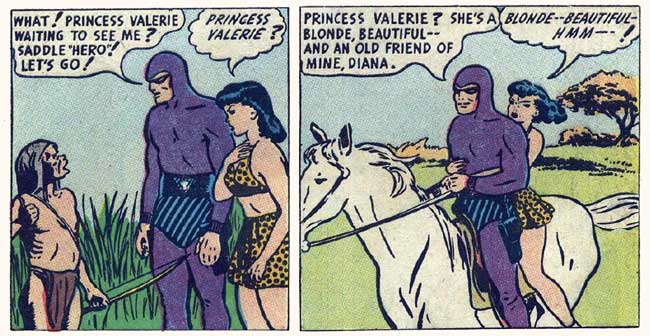
What the P-man has neglected to tell his paramour is that Valerie is a beautiful, blonde girl maybe eight years of age, who wants to give him a picture she drew of her house and a flower. It’s a cute little moment, made slightly less so by ominous happenings slightly further away from Phantom’s home in the Skull Cave…
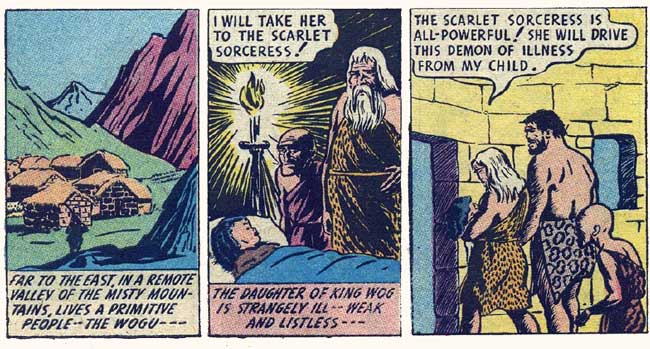
The King of the Wogu (a name which is rightfully awkward and embarrassing in the modern era) calls upon his seer of seers, prognosticator of prognosticators, Punxatawney Phil The Scarlet Sorceress! And she has the cure for his beloved daughter’s malaise…
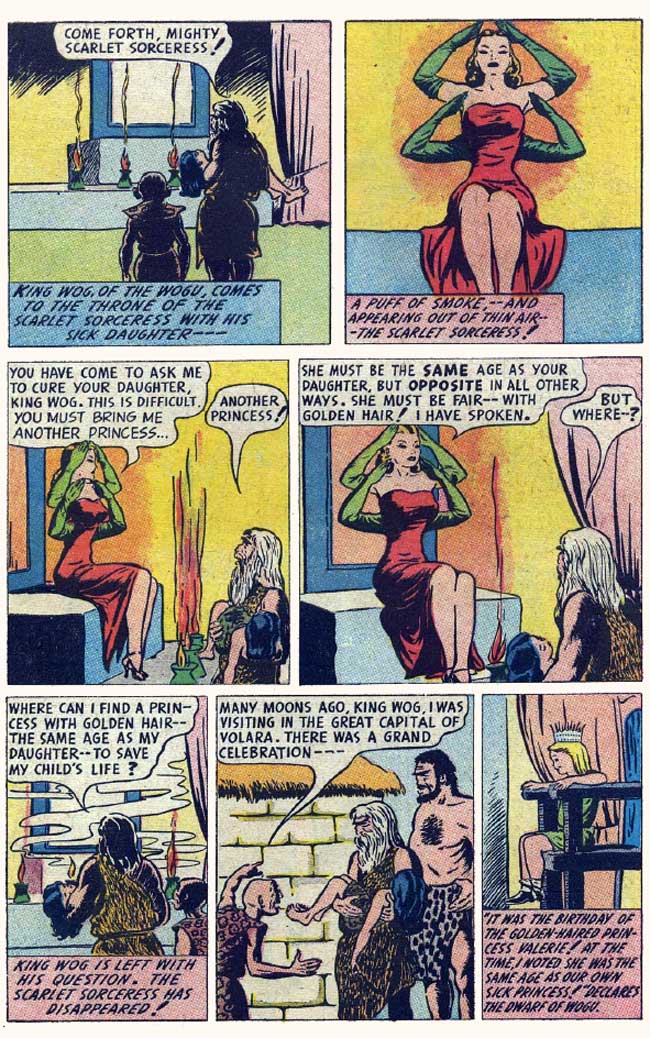
Making their way to the kingdom, King Wog’s servants, a strongman and a dwarf, infiltrate the kingdom as a traveling show, impressing Valerie’s family with feats of strength and comedy. That night, they set upon their nefarious plan…

I had always been led to believe that this book was entirely drawn by Simon and Kirby, but in fact, it features Joe Simon alone, only on the cover art, the better to appeal to the audience that Harvey Comics was seeking. (1958 was, after all, the Marvel monster era, wherein the creators and tropes that would give us Silver Age Marvel in less that three years were starting to take shape.) Once Valerie is taken, her grandfather, The White Rajah calls upon the jungle’s protector to get involved. The Phantom quickly figures out what happened and does not mince words (or “jungle wireless”, the drums used for communications) in questioning the Wogu…
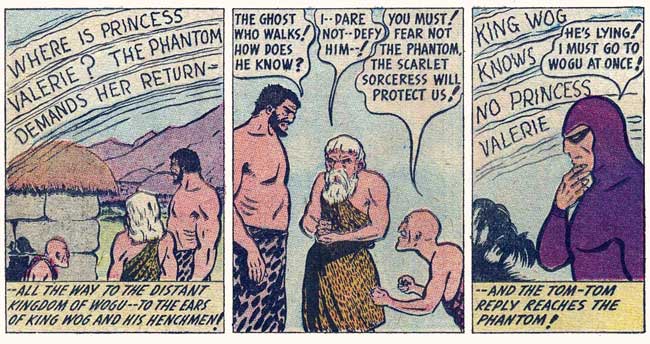
Certain that the King has lied, The Phantom saddles his mighty steed, Hero, and sets off for the land of Wogu. Along the way, though, he discovers a puzzling tableau…
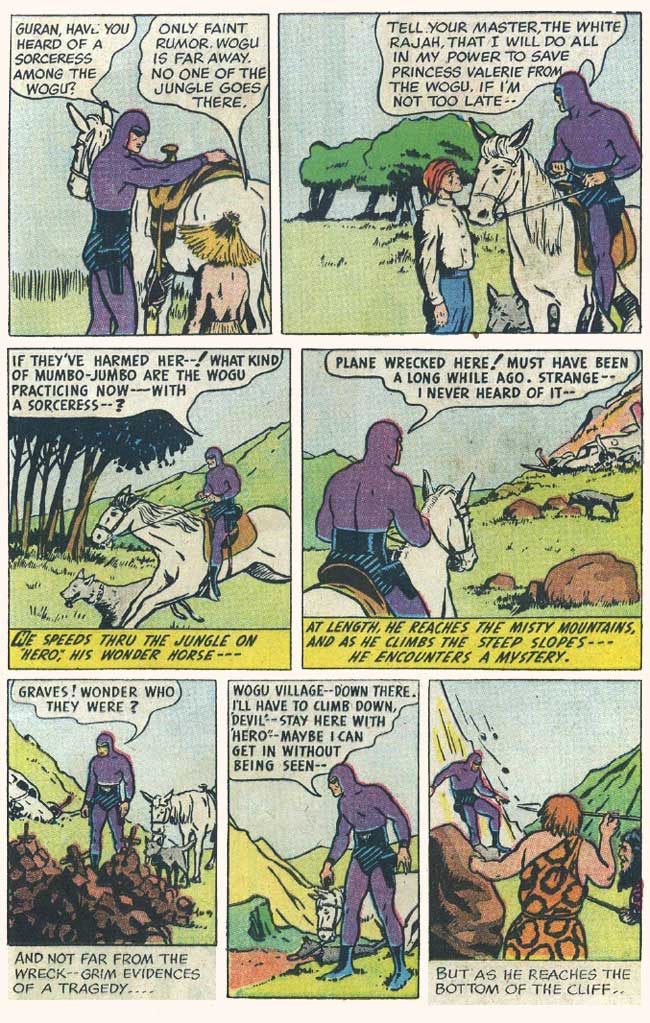
Unfortunately, King Wog’s lands are not unprotected from invaders.
‘Course, they’re match at all for the Ghost Who Walks, the man with the power of TEN TIGERS!

…except, that is, for the King’s pet strongman. Overpowered, The Phantom is taken to see the Scarlet Sorceress, whose powers seem to be magical as all heck. Then again, The Phantom’s powers likewise seem to be so, and as she disappears in a puff of smoke, he breaks free of his bonds and follows!
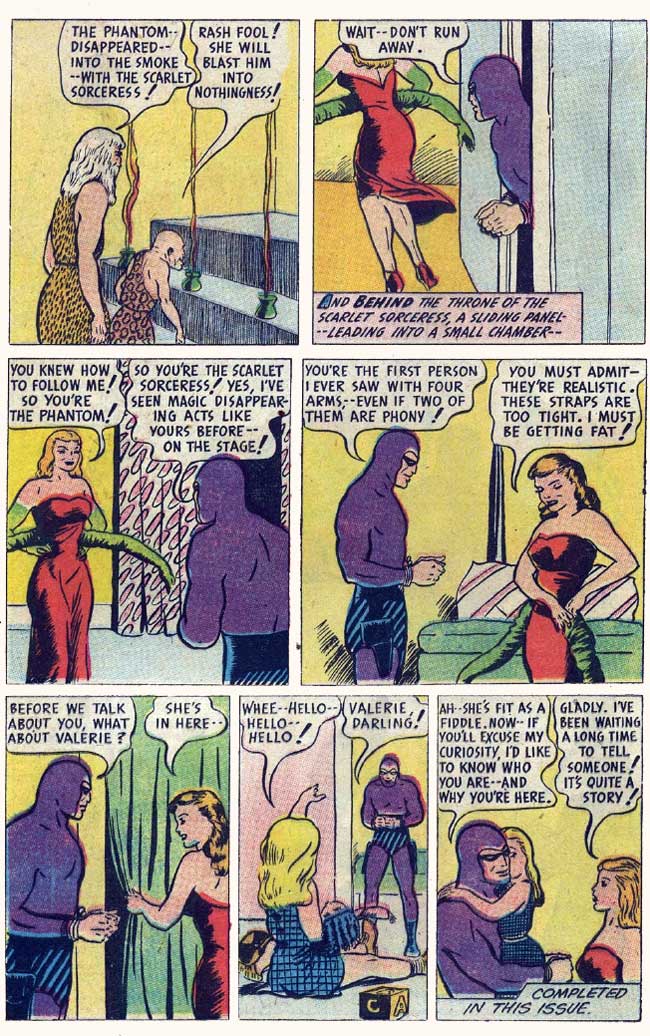
Like his spiritual brethren, Penn & Teller, The Phantom knows how the trick is done, using that knowledge to figure out that the Scarlet Sorceress isn’t all that she seems. She is a stage magician named Magda (but I think of her as Ginger in my head), whose traveling troupe encountered some turbulence on the way to entertain the troops…

It was supposed to be a three-hour tour! Why did they let Gilligan fly the plane? WHY????
Aaaanyway, Magda reveals that she never intended to hurt the Princess, thinking that asking for a perfect blonde Princess in the wilds of the jungle would prove an impossible task. Moreover, she was terrified that the King would discover her ruse and have her killed. Fortunately, The Phantom is a master of improvisation…
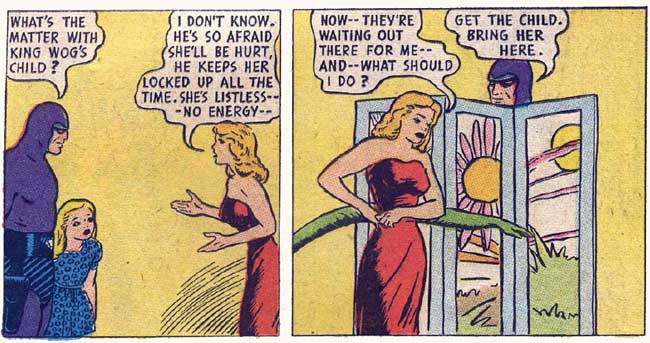
He’s also an expert on many things, including human nature. When the King comes to claim his now-cured daughter, a peculiar yet perfectly mundane alchemy has occurred!
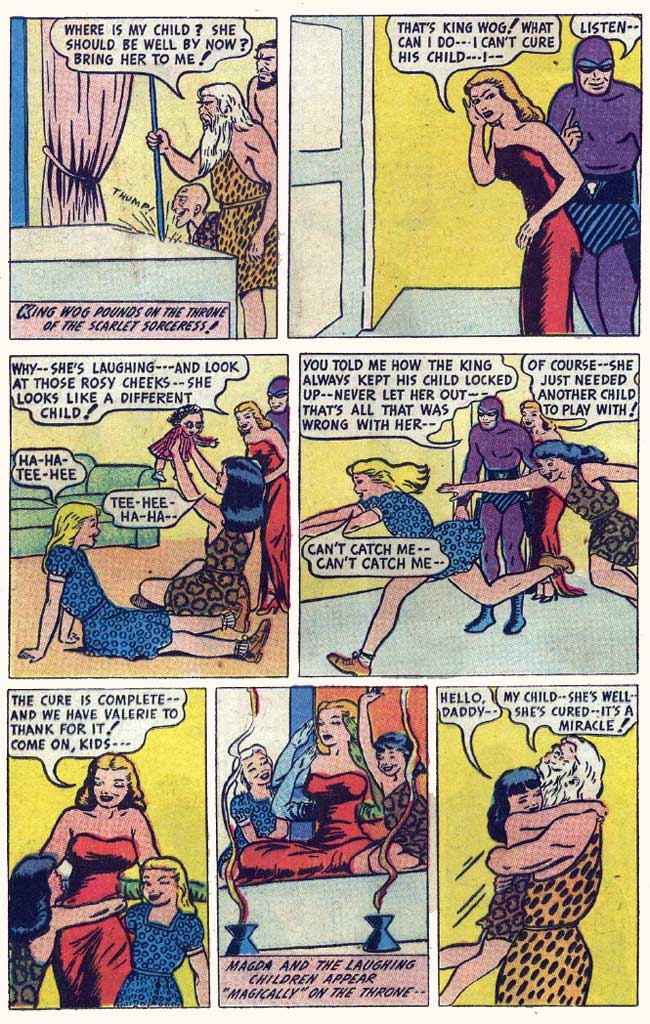
The child is cured! (Turns out she was just really, really bored. I think we can all relate to that.)
Of course, this makes things even worse, as King Wog insists upon keeping Valerie prisoner to play with his daughter for the rest of her life. It’s a decree that doesn’t play well with The Phantom…
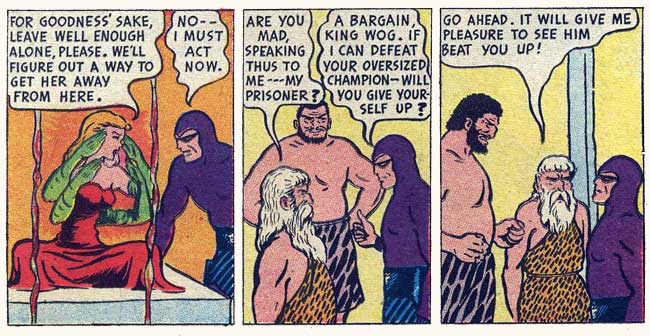
Much as Batman would find years later, with Ra’s Al Ghul’s pet giant, Ubu, the big man has never had a proper challenge, and has a particular weakness in his midsection and a glass jaw. No longer caught by surprise, The Phantom’s power and superior skill make short work of the big man’s power, a theory that also explains the wrestling career of Shawn Michaels…
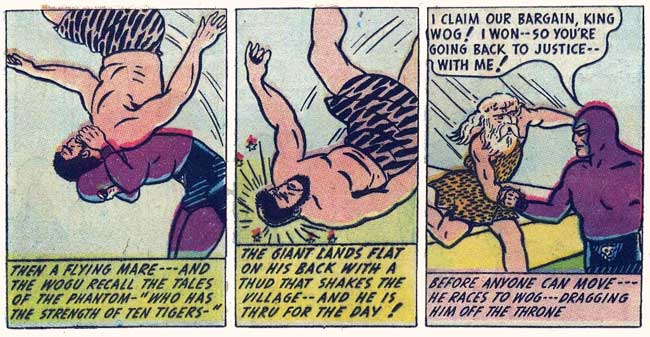
Breaking down in tears, King Wog blubbers that he only did any of it to save his little girl, and that the Sorceress’ words made him think that kidnapping was his only option. His admission softens the heart of the erstwhile Scarlet Sorceress…

And all’s well that ends okay! Evil is thwarted, a family is reunited, and Magda is saved from having to pretend to be a magical genie in the mountains of Wogu. It’s a really solid adventure tale, especially compared to many books of the same era, featuring a relatively complex tale and less cringeworthy stuff than many ‘jungle’ tales. I’ve often wondered why The Phantom never really caught on in American comics the way he did throughout Europe, and the only answer I can come up with is… Maybe the purple suit? In either case, Harvey Hits #12 – The Phantom is a one of those strange issues that perfectly bridges a gap between comic eras, capturing both the lost Golden Age and the burgeoning Silver Age of comics, with a little Joe Simon art to help wash it down, earning 3 out of 5 stars overall. Now, I wonder if I shouldn’t brush up on The Phantom’s current appearances in the King Features books from Dynamite…
[taq_review]Dear Spoilerite,
At Major Spoilers, we strive to create original content that you find interesting and entertaining. Producing, writing, recording, editing, and researching requires significant resources. We pay writers, podcast hosts, and other staff members who work tirelessly to provide you with insights into the comic book, gaming, and pop culture industries. Help us keep MajorSpoilers.com strong. Become a Patron (and our superhero) today.


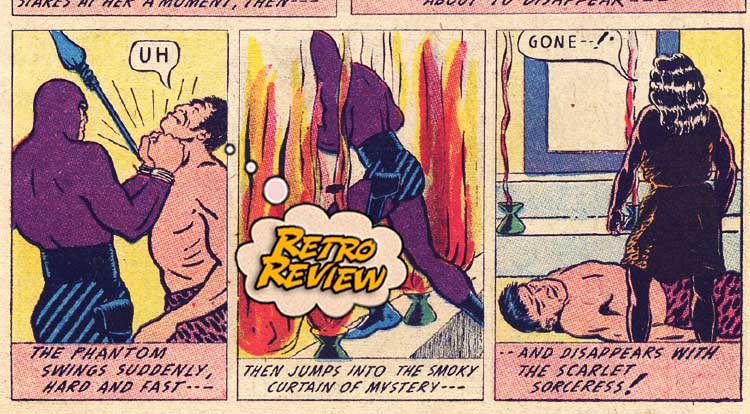
2 Comments
You might be right with the suit. Phantom is one of the most popular comic book characters here in Finland and our Phantom always had navy blue costume. Well, most of the time pages were black and white, but covers were in color. His popularity might also have something to do with that Kari Leppänen, one of the best known Phantom artists in Europe is from here, but I think its totally the costume color.
Maybe it’s the legacy angle. Considering how resistent to change most American heroes are, and how legacies tend to bounce back to the original guys, I think the family heritage aspect of the Phantom canon plays against the character(s) in American releases.